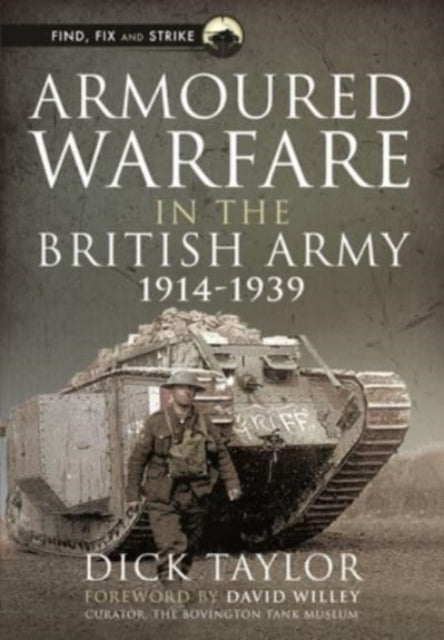Armoured Warfare in the British Army, 1914-1939
Usually shipped within 24 hours
UK deliveries from £5.95
Delivery & Returns
Delivery & Returns
We use the Royal Mail, DHL Express or UPS for our customers. For UK addresses, deliveries under 10kg are a standard £4.95 via Royal Mail Tracked 48 Service. For orders over 10kg and overseas customers, postage is calculated for you at checkout once you have entered your postal address. This price, does not include any potential custom charges that may apply, depending on the product or destination, as every country has very different import duties / taxes. Online exclusive products (such as trainers) will be delivered to you directly from the printer, separate from other items in your order, but your postage fee covers ALL items in your order.
If you are unhappy with your purchase, please email shop@tankmuseum.org within fourteen (14) working days of receiving your goods, and return it to us at the address below, in its original condition, unopened (with any seals and shrink-wrap intact) and we will issue you a full refund or replace it. Goods must be returned at your own cost. If the item is faulty, you do not need to return it, we will send you a replacement free of charge.
Description
Description
By Richard Taylor
This is the first volume in a three-volume illustrated history of the evolution of armoured manoeuvre warfare in the British army, covering the period from 1914 until 1939.
Author Dick Taylor's tour de force covers the evolution of the tank and armoured cars in response to the specific conditions created by trench warfare, the history of the use of tanks during the war, as well as the critical period between the wars in which the tank was both refined and neglected. He also looks in detail at the amalgamations and mechanization of the horsed cavalry which led to the formation of the Royal Armoured Corps in 1939.
His detailed and absorbing narrative covers the social and human aspects of the story as well as the technology, and explains how the nation that invented and first fielded the tank in 1916 struggled to maintain the lead after the Armistice.
![Armoured Warfare in the British Army, 1914-1939 Book [variant_option4]](http://tankmuseumshop.org/cdn/shop/products/9781399001182.jpg?v=1748335042&width=1214)

![Armoured Warfare in the British Army, 1914-1939 Book [variant_option4]](http://tankmuseumshop.org/cdn/shop/products/9781399001182.jpg?v=1748335042&width=88)
![Tank Museum Playing Cards Game [variant_option4]](http://tankmuseumshop.org/cdn/shop/files/ProductShoot_10_10_2025035.jpg?v=1760358498&width=176)
![Tank Museum Wrapping Paper - White - Two sheet pack Wrapping Paper [variant_option4]](http://tankmuseumshop.org/cdn/shop/products/Wrapp_Paper_All.jpg?v=1748337915&width=176)
![Armoured Warfare in the British Army, 1914-1939 Book [variant_option4]](http://tankmuseumshop.org/cdn/shop/products/9781399001182.jpg?v=1748335042&width=640)



